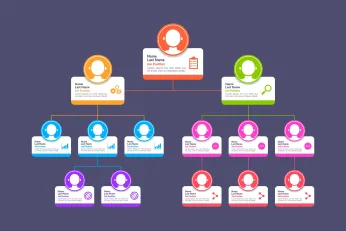Comment fonctionne la Commission du commerce de détail : Le guide court et rapide
Apprenez en un clin d'œil ce qu'est la commission du commerce de détail grâce à un guide rapide. Il s'agit de l'ouvrage de référence ultime pour les professionnels du commerce de détail. Découvrez son fonctionnement et son impact.
Sur cette page
Comment fonctionne la commission dans le commerce de détail ? Comment les employés du secteur de la vente au détail sont-ils récompensés pour leurs ventes ? Est-ce différent du reste des secteurs d'activité ?
Si vous vous posez ces questions, ce blog vous apportera toutes les réponses. Les employés de la vente au détail gagnent une belle commission pour les ventes qu'ils réalisent - cette commission peut être basée sur le volume ou la valeur de la vente.
La structure de commission utilisée par les entreprises de vente au détail est légèrement différente de celle des autres secteurs. Ce n'est qu'en utilisant une structure de commissions et d'incitations solide et compétitive qu'un employeur peut retenir et conserver des vendeurs bien formés et efficaces sur un marché dynamique.
Dans ce guide, nous aborderons les types de commissions, les facteurs qui les influencent et la manière de créer et d'actualiser les structures de commissions et de rémunération dans un espace de vente au détail volatile.
Types de structures de commissions dans le commerce de détail
L'étude Gartner indique que chaque employé qui quitte une organisation coûte à celle-ci plus de 18 591 USD. L'employeur consacre beaucoup d'argent et de temps à la sélection, à l'intégration des employés, à leur formation et à leur intégration dans les systèmes de paie.
Le taux d'attrition est extrêmement élevé (60,5 % ) dans le secteur de la vente au détail. C'est pourquoi le fait de disposer d'une bonne force de vente, bien rémunérée par une bonne structure de commissions, permet de conserver des ressources performantes, bien formées et précieuses.
Voici quelques structures de commissions courantes dans la plupart des entreprises de vente au détail :
1. Commission directe
Les commissions directes sont versées aux employés lorsque leur rémunération dépend uniquement du volume ou de la valeur des ventes qu'ils réalisent. Il s'agit d'un type courant de structure de commission utilisé par des entreprises telles que les assurances, les produits bancaires de détail, l'immobilier, etc.
2. Salaire de base + commission
Ce type de système est généralement utilisé pour les agents et les représentants de haut niveau qui vendent des produits de luxe et de grande valeur ou même des produits plus modestes tels que les produits de grande consommation, la mode et l'habillement. Les employés bénéficient d'une structure de commission OTE.
3. Commission à paliers
La stratégie de commission par paliers permet de faire varier le pourcentage de la commission au fur et à mesure que les employés réalisent un volume de ventes plus important.
Par exemple, la commission pour la vente de 100 unités peut être de 10 %, mais entre 100 et 200 unités, elle peut être de 15 %, etc. Ce système est utilisé dans les produits de grande consommation, la mode, l'habillement et les entreprises connexes.
4. Commission des recettes ou de la marge brute
Ce type de commission convient mieux aux produits de grande valeur qui permettent à l'entreprise de dégager une marge bénéficiaire.
Les employeurs motivent les vendeurs pour qu'ils vendent avec des marges bénéficiaires plus élevées, de manière à ce qu'ils reçoivent une part des bénéfices. Les ventes de SaaS, de produits informatiques et de matériel, d'automobiles et de biens immobiliers en sont un bon exemple.
Facteurs influençant les taux de commission
De nombreux facteurs entrent en ligne de compte dans la structure du taux de commission proposé par une entreprise de détail.
Il est important de garder à l'esprit que proposer un taux de commission attractif peut s'avérer délicat, car l'employeur doit être en mesure de réaliser un bon chiffre d'affaires afin de partager les bénéfices avec les employés. Une bonne structure de commissions tient compte à la fois des revenus de l'employeur et des besoins de l'employé lors de la formulation d'un plan.
Une étude menée par la Harvard Business Review ( 13657) a révélé que les structures de commissions liées aux performances offraient de la satisfaction au travail et avaient un effet positif sur les employés. Mais quel type de structure de commission doit-on proposer aux employés ? Cela dépend d'un certain nombre de facteurs tels que
- Le type de produit ou de service vendu - est-il mesuré en valeur ou en volume ?
- Demande du produit sur le marché - dans quelle mesure est-il facile à vendre pour le vendeur ?
- Complexité du produit - dans quelle mesure est-il facile à approcher et à vendre sur le marché ?
- Délai d'exécution et cycle de vente - combien de temps faut-il pour vendre le produit ?
- Normes du secteur - quelles sont les performances des marques et des employés concurrents ?
Composantes de l'indemnisation
Le personnel de vente au détail aux États-Unis est payé en moyenne entre 27 570 et 35 964 USD, mais ce chiffre varie en fonction du produit vendu par le personnel de vente. Les produits tels que l'assurance, l'immobilier, l'informatique et le matériel, la mode et le commerce de luxe peuvent donner lieu à une structure de commissions intéressante.
En revanche, les ventes de produits de grande consommation, d'articles d'ameublement et d'autres produits connexes peuvent donner lieu à des commissions plus modestes. Aux États-Unis, le personnel de vente au détail typique perçoit un salaire de base ainsi qu'un pourcentage de commission sur la valeur ou le volume des ventes qu'il réalise.
Vous trouverez ci-dessous quelques-uns des éléments communs aux employés de la vente au détail :
Composantes fixes de la rémunération
- Rémunération de base
- Plans 401K
- Régimes de retraite
- Régimes d'assurance maladie et d'assurance vie
Composantes variables de la rémunération
- Commission sur les ventes
- Incitations liées à la performance
- Primes en espèces (uniques ou récurrentes)
- Récompenses en espèces, chèques-cadeaux et autres systèmes de réduction
- Remboursement des frais de transport/de téléphone portable
- Programmes d'aide aux employés
- Récompenses non monétaires (sorties d'équipe, chèques vacances, chèques repas, etc.)
Calcul des commissions de détail
Des études révèlent que seuls 32 % des employés du secteur du commerce de détail sont satisfaits de la rémunération versée par leur employeur.
C'est la raison pour laquelle les gens quittent les emplois du commerce de détail, ce qui entraîne une perte d'argent et de ressources humaines précieuses pour les employeurs. En mettant en place une solide structure de commissions pour le commerce de détail, les employeurs peuvent conserver davantage de salariés.
Des villes comme New York et Chicago offrent une bonne structure de rémunération de base de 55 983 et 52 087 USD par an. Des commissions sont versées au-delà de cette valeur en fonction de l'atteinte des quotas de vente.
Les employés qui ont plus de 10 ans d'expérience perçoivent un salaire de base compris entre 65 000 et 70 000 USD par an, ce qui favorise le potentiel de rémunération des vendeurs à long terme.
La commission sur les ventes est calculée en multipliant le pourcentage de la commission par le quota de vente à atteindre. Le pourcentage de commission de vente typique pour le B2C est de 10 à 30 pour cent en fonction du produit. Pour les clients B2B, cette valeur est estimée entre 7 et 15 %. Dans le secteur de l'habillement et de la mode, le pourcentage de la commission se situe entre 10 et 20 %.
Par exemple : si le salaire de base d'un employé est de 10 000 USD et que sa commission sur les ventes est de 10 % pour la réalisation des objectifs, sa commission sur la réalisation à 100 % d'un quota de 20 000 USD sera la suivante : 10 000 + (10 x 10 000) = 11 000 USD : 10 000 + (10 X 10 000) = 11 000 USD.
Il s'agit d'un exemple de modèle base + commission. Si les employés utilisent le modèle de commission uniquement, les quotas de vente sont plus élevés avec un pourcentage et une valeur de commission plus élevés.
Par exemple, un vendeur de voitures de luxe peut avoir une structure de commission de 25 % sur les ventes conclues. Ainsi, pour la vente d'une voiture de luxe d'une valeur de 100 000 USD, la commission est calculée comme suit : 100 000 USD X 25 = 25 000 USD
Chanel, une marque de luxe qui vend une variété de bijoux, d'accessoires, de vêtements et d'autres articles de mode, offre l'une des meilleures structures de rémunération et de commission pour ses vendeurs.
Le salaire de base des employés est de 137 642 USD, dont les commissions sont évaluées à 57 280 USD environ. Les employés perçoivent environ 20 à 25 % de commissions sur divers articles en fonction de la valeur du produit.
Programmes de primes et d'incitations
Les primes et les incitations font partie intégrante de la rémunération des employés et des études révèlent que 90 % des entreprises les plus performantes investissent dans des incitations et des récompenses en espèces et en nature pour leurs employés.
Les avantages doivent comprendre des primes en espèces et d'autres incitations liées aux performances afin de motiver les employés à mieux travailler et de créer une atmosphère de croissance.
Les récompenses monétaires et non monétaires peuvent être utilisées comme des incitations pour récompenser le bon comportement des vendeurs. En fait, les entreprises estiment que les incitations non monétaires contribuent à 20 % de plus à la rétention et à l'engagement de leurs vendeurs. Les entreprises peuvent encourager les employés en utilisant des récompenses spécifiques pour des performances et des actions spécifiques au sein de l'entreprise. En voici quelques exemples :
- Des réductions plus importantes pour les amis et la famille des employés
- Meilleure compensation en cas de pic d'activité et de vente saisonnière
- Rémunération et plans d'incitation flexibles
- Récompenses en espèces en cas de dépassement des objectifs
- Cartes-cadeaux, certificats, bons d'achat, programmes de réduction pour les employés
Des entreprises comme PINK et Victoria's Secret ont été classées consécutivement comme les meilleures entreprises de vente au détail pour lesquelles travailler par les vendeurs en raison de leurs meilleures commissions de vente du secteur sous la forme d'une rémunération basée sur les performances et d'avantages sociaux tels que des remises de 20 à 30 %, des programmes de recommandation, des avantages sociaux et un environnement de travail décontracté et positif.
Incitations à la vente croisée et à la vente incitative
L'augmentation du chiffre d'affaires des entreprises peut s'avérer délicate au-delà d'une certaine limite. Mais les commerciaux peuvent contribuer à l'augmentation du chiffre d'affaires en vendant simplement de manière plus intelligente - les techniques de vente croisée et de vente incitative se sont avérées efficaces pour attirer les clients vers des produits de meilleure qualité et de plus grande valeur au sein de l'offre de l'entreprise.
La vente croisée aide les clients à regarder au-delà du catalogue et à investir dans d'autres produits liés à l'achat envisagé.
La vente incitative est le souhait d'un client d'acheter un produit de meilleure qualité que celui auquel il est habitué. Une bonne présentation du produit et une bonne technique pour convaincre les clients d'acheter d'autres produits et des produits de meilleure valeur requièrent des compétences et une formation.
Des études ont révélé que les vendeurs qui pratiquent la vente croisée et la vente incitative ont pu augmenter leur chiffre d'affaires de 30 % grâce à cette simple technique. Sur 500 vendeurs, 88 % reconnaissent que la vente incitative permet d'identifier les besoins et les préférences réels des clients et d'augmenter le chiffre d'affaires.
En mettant en place des mesures incitatives pour les employés qui font de la vente incitative et de la vente croisée, les employeurs peuvent contribuer à l'augmentation de leur chiffre d'affaires et à une meilleure visibilité de leur marque.
Apple est un exemple classique de vente incitative et de vente croisée. Les employés d'Apple essaient toujours de vendre les nouveaux téléphones aux clients existants et bénéficient d'une commission spéciale liée à leurs performances et à leur quota de vente. Les dirigeants d'Apple regroupent également de nombreux produits au moment de l'achat pour favoriser la vente croisée d'autres produits connexes, tels que le Macbook ou l'iPhone.
Conformité et considérations éthiques
Les commissions versées aux employés qui travaillent dans le secteur de la vente au détail doivent respecter le droit du travail du pays.
Pour protéger les consommateurs, la commission fédérale du commerce (Federal Trade Commission) a édicté un certain nombre de règles concernant le paiement des commissions des vendeurs au détail. Voici quelques-unes des règles les plus courantes :
- Les commissions doivent être payées conformément au contrat légal établi entre l'employé et l'employeur.
- Les commissions ne font pas partie du salaire de base et les employeurs ne doivent pas nécessairement les verser dans le cadre du salaire.
- Les commissions doivent être payées sur la base de l'accord entre les deux parties, au taux convenu. Tous les litiges peuvent être résolus légalement sur la base des contrats et documents de travail.
- Les commissions d'une personne qui est relevée de son emploi doivent être payées intégralement au moment de la sortie.
Les commissions ont une implication éthique, car elles induisent une tendance à la vente basée sur les commissions parmi les employés. Certaines entreprises éliminent totalement les commissions afin de supprimer tout impact négatif, toute jalousie, toute concurrence et toute autre implication liée à la clientèle sur le lieu de travail.
Les dirigeants et les employeurs doivent veiller à ce que les commissions soient liées à une croissance positive et à créer un environnement de travail sain.
Les vendeurs doivent respecter un code éthique d'honnêteté et de transparence avec leurs clients. Les employeurs doivent veiller à ce que les employés ne fassent pas de promesses excessives ou ne survendent pas le produit pour obtenir des incitations, ce qui pourrait finir par ternir le nom de la marque.
Les employeurs doivent veiller à ce que les employés ne se livrent pas à des "actes déloyaux et trompeurs" et à ce que les commissions ou autres incitations soient liées à un comportement positif sur le lieu de travail.
Évaluation et ajustement
En tant qu'employeurs et propriétaires de commerces de détail, vous êtes confrontés à des changements constants sur le marché et à des fluctuations dynamiques des ventes et du chiffre d'affaires.
Les salariés désengagés sont ceux qui ne se sentent pas appréciés et pas assez récompensés pour leurs efforts. Des études suggèrent que 6 employés sur 10 sont des "démissionnaires silencieux" en raison des efforts insuffisants des entreprises en matière d'engagement et de rémunération dans le monde entier. Cette situation a coûté près de 9 % du PIB.
Les employeurs du secteur de la vente au détail doivent constamment évaluer la structure des rémunérations et des commissions sur le marché et l'écart entre les normes du secteur et celles de l'entreprise.
Un rapport sur la satisfaction des employés suggère que les employés de vente dans le commerce de détail affichent une rentabilité supérieure de 21 % lorsqu'ils sont heureux et engagés. Les entreprises de vente au détail doivent procéder à des ajustements réalistes de la structure des rémunérations et des commissions en tenant compte de divers indicateurs économiques et de marché tels que :
- Salaire de base et structure des commissions des concurrents
- Situation de l'économie et hausse de l'inflation
- Insatisfaction des employés et conflits d'intérêts
- Complexité des produits et concurrence sur le marché
- Saturation du marché et indicateurs de performance
En tant que gestionnaires et employeurs, les entreprises de vente au détail doivent constamment s'efforcer d'offrir les meilleures normes de commission du secteur pour que les employés restent heureux et engagés. La bonne structure de commission leur donne un coup de pouce constant dans la bonne direction. Cela permet de raccourcir le cycle de vente, de mieux présenter les produits aux clients, d'améliorer le chiffre d'affaires et, globalement, d'augmenter les revenus de l'employeur et de l'employé.
Conclusion
Partout dans le monde, les employés subissent un stress énorme : 44 % d'entre eux déclarent en moyenne subir des journées de travail très stressantes. Des études suggèrent que les employés stressés sont moins susceptibles de conserver leur emploi.
Le stress sur le lieu de travail est généralement attribué à une mauvaise rémunération, au fait de ne pas être reconnu et récompensé pour ses efforts et à des relations de travail négatives avec l'employeur. Avec une bonne rémunération et un système de commissions sain, les employeurs peuvent motiver, engager et se rapprocher de leurs employés d'une meilleure manière.
Les employés qui se sentent reconnus et appréciés pour leurs efforts sont plus productifs et plus performants au travail. 96 % des salariés estiment que l'empathie de leur employeur est un paramètre important pour conserver leur emploi. En utilisant des récompenses et des incitations monétaires et non monétaires, les employeurs doivent s'assurer que les employés disposent d'un bon système de soutien.
Étant donné que les employés sont le cœur et l'âme d'une organisation et qu'ils constituent des ressources précieuses, le fait de les récompenser pour leurs efforts au moyen de commissions, de primes et d'incitations peut améliorer la satisfaction de vos employés.














